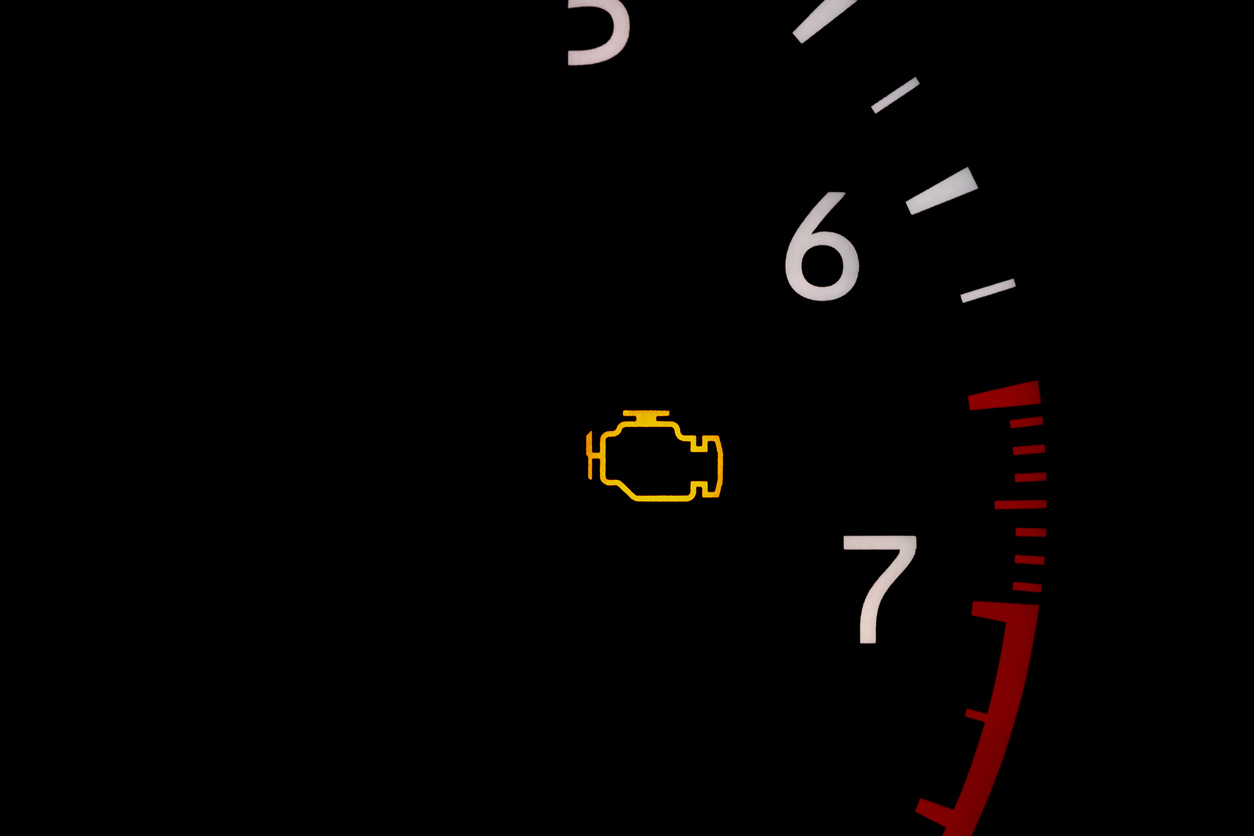Body parts
Available parts: 329.586

Content
1. This is the meaning of the engine control light lighting up.
2. Engine control lamp flashes or lights up – these are possible causes
3. This is what the driver can do when the check engine light comes on
4. Engine control lamp lights up – these parts may be defective
The check engine light is one of the numerous indicator lights in the cockpit of every modern car. The indicator lamp, also known as the MKL, alerts the driver to faults in the engine control system, problems with the ignition or faults in the engine’s exhaust gas aftertreatment. Poor combustion of the engine or faulty exhaust gas cleaning should be noticed immediately in order to prevent defective exhaust gas values.
The engine control light in the cockpit signals to the driver that there is a problem with the exhaust gas treatment or the engine control. This means that the engine is not running optimally or the exhaust gases are not being cleaned as intended, which makes a closer diagnosis in the workshop necessary. At the same time, the fault is stored in the vehicle’s fault memory.
In contrast to the flashing of the red oil lamp, which should immediately stop the vehicle, the vehicle can usually still be driven if the MKL is illuminated. A flashing check engine light, on the other hand, can indicate more serious faults. If the check engine light is flashing, it is better to switch off the engine at the next opportunity or take the car to a workshop.
If the check engine light comes on when the car is started, this is nothing unusual. The indicator light comes on as standard when the ignition is switched on, and goes out again a few seconds after the engine has started. This allows the system to be checked for correct operation. If the check engine light does not come on when the engine is started, the MI itself or the diagnostic system is defective.
There are many possible causes for the engine light to come on. The fault can be located in the intake system, in the exhaust tract or in the engine itself. A dirty spark plug can be the source of the fault, as can a defective ignition coil or a leak in the exhaust manifold.
A modern engine has more and more sensors, lines and systems that can also play a role as possible sources of error. A frequent cause for the glow of the MKL in modern engines is a defect in the lambda sensor. If the lines and hoses in the intake system are porous, air leakage can become a problem.
An illumination or flashing of the MKL only indicates a problem without specifying the exact causes. In some cases, problems occur only temporarily or in certain driving situations, so that the check engine light flickers or lights up and then goes out again by itself. The driver should look out for unusual engine behaviour and take the vehicle to a workshop as soon as possible. Reading out the fault memory can be particularly helpful.
Faults in connection with the MKL are stored as a fault code in the fault memory of the vehicle. This can be read out by the ADAC or a workshop, for example, and serves to better diagnose the fault. The data and information from the diagnostic device provide the mechanic in the workshop with an initial overview of the problem.
For example, the error message „mixture formation adjustment too lean“ or the error „probe cat signal implausible“ may indicate a defective hose in the intake tract. However, the error message can also have another cause. Extensive troubleshooting and a certain amount of experience are therefore usually necessary for an accurate diagnosis.
If the engine check lights up, the car’s components are usually defective and should be replaced as soon as possible. For example, all components of the ignition system, such as spark plugs, ignition cables or the ignition coil, as well as parts of the exhaust system, such as the lambda sensor or the catalytic converter.
A common cause of an illuminated or flashing check engine light is a defective EGR valve. EGR stands for Exhaust Gas Recirculation and this valve helps reduce emissions and improve engine performance in diesel vehicles. It does this by directing some of the exhaust gases back into the cylinders. Defects in the EGR valve are often caused by a blockage with particles.
Components in the engine’s intake tract, such as broken intake hoses, intake manifolds or mass air flow sensors, are also frequently the cause of problems and the glow of the check engine light. Sensors such as the camshaft sensor or the boost pressure sensor can also be the cause.
You can find high-quality used original spare parts from certified car recycling at Autoparts24. Here you have the opportunity to compare numerous offers from different car recycling companies and to order the right spare part for your vehicle at a reasonable price.
Body parts
Available parts: 329.586

Breakes / wheels
Available parts: 277.927

Chassis / shafts
Available parts: 248.760

Cooling system
Available parts: 81.417

Eletronic parts
Available parts: 448.296

Engine / engineparts
Available parts: 333.656

Exhaust system
Available parts: 94.557

Fuel system
Available parts: 45.836

Gearbox / transmission
Available parts: 239.637

Heating / a/c
Available parts: 192.415

Interior
Available parts: 382.233

Lights
Available parts: 121.191

Locks / locking system
Available parts: 158.864

Mirrors
Available parts: 67.441

Radio / audio / infotainment
Available parts: 70.866

Steering
Available parts: 145.365

Switches / contacts
Available parts: 249.681

Tools / equipment
Available parts: 11.901

Wipers
Available parts: 222.762
